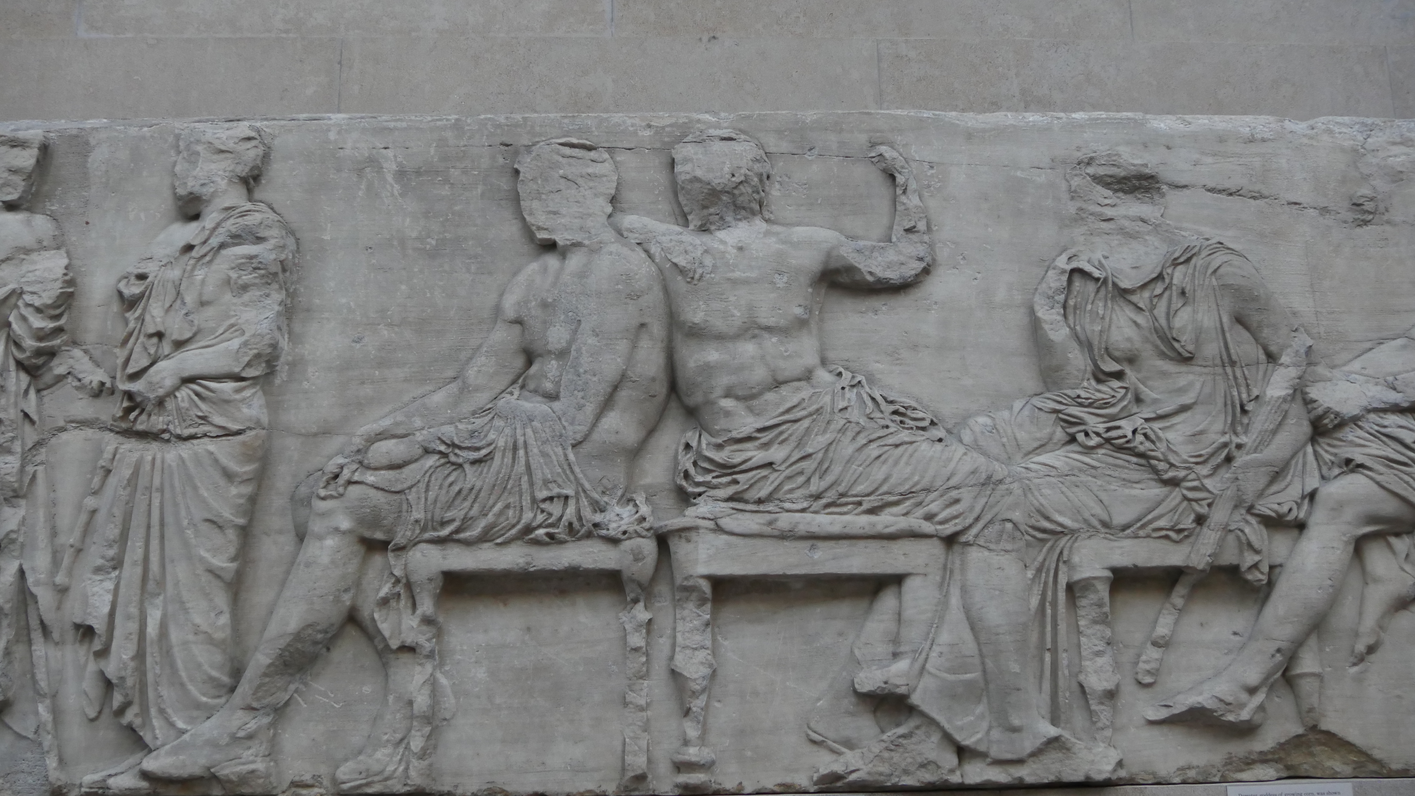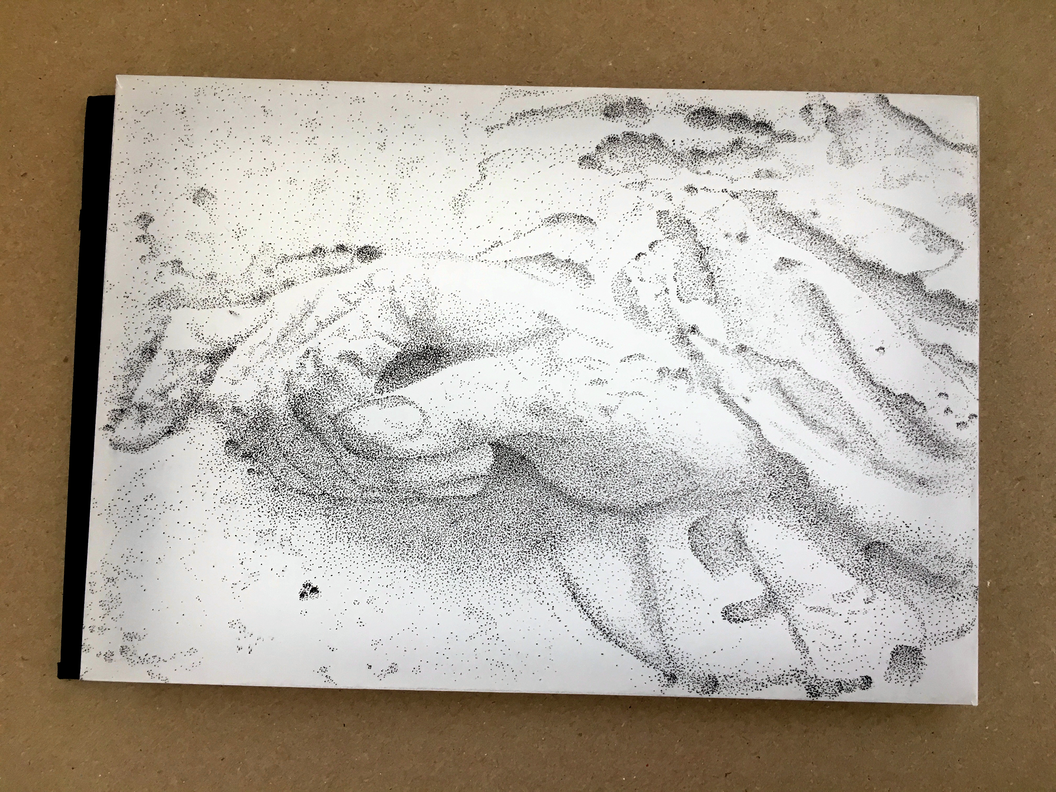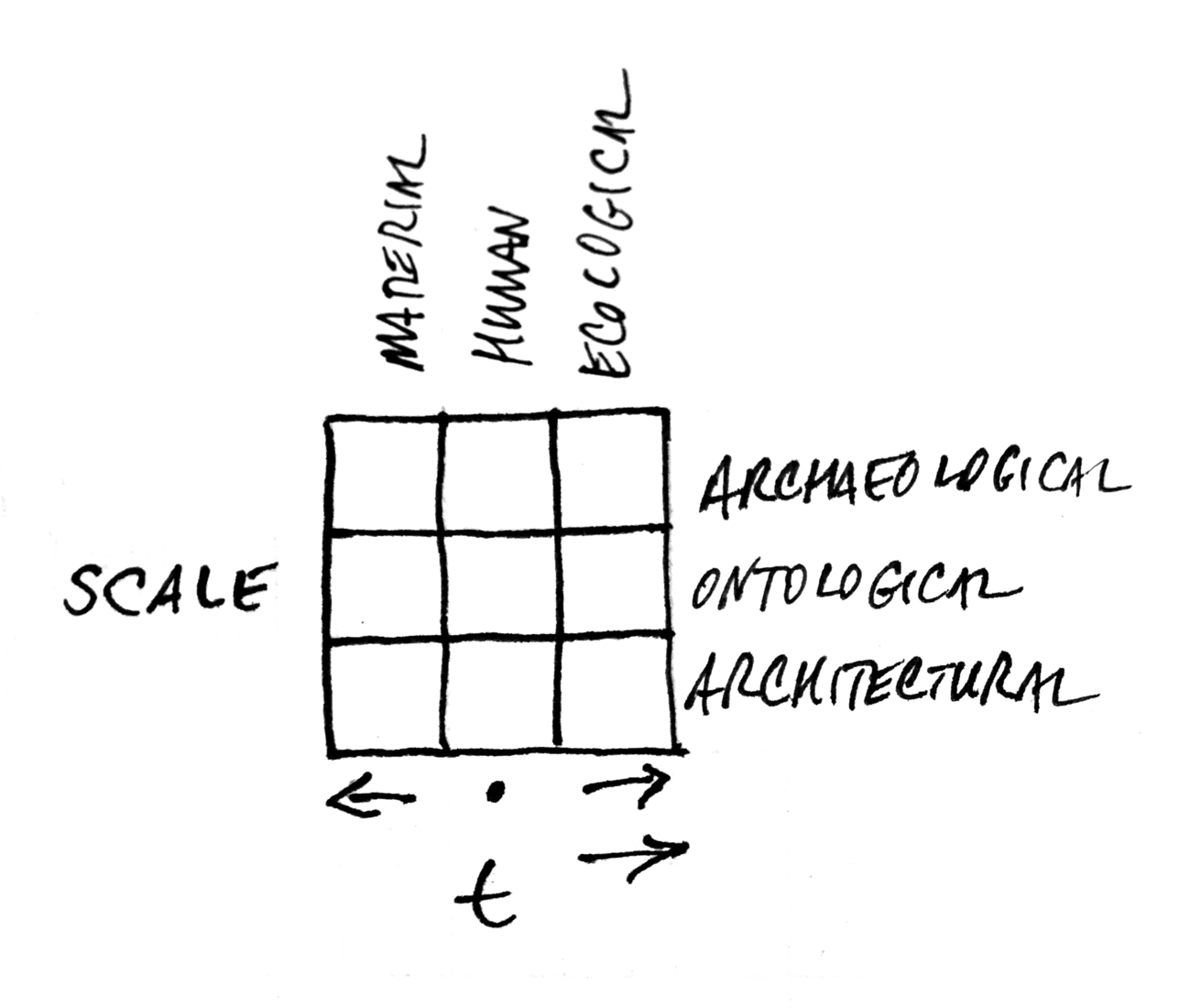We live in a time when established taxonomies beg to be reframed, so as to embrace emerging imaginaries and respond to shifting historicities, archaeologies, and topographies.
— Ana Helena Arévalo
Decolonisation is becoming more urgent than ever, with monuments to colonisation increasingly being contested, defaced and dismantled, accelerating debates which have steadily increased in museums and cultural heritage over the past decade (Clavo and others 2020). A global pandemic has prompted a desire not to return to ‘normal,’ in terms of neoliberal working practices, academic curriculum and discourse, and, more specifically, in terms of how, where and what we might encounter as cultural heritage.
The sociologist Ruth Levitas (2013) traces the anti-colonial drive back to the 1960s, when along with Marxism, feminism and race studies, it contributed to a critical impulse in academia, which has grown as we move through this century. The philosopher and quantum physicist Karen Barad also notes the rise of critique, but describes it as ‘over-rated, over-emphasized, and over-utilized’. She finds it too easy, particularly when applied automatically and superficially, being merely destructive and not deconstructive, or indeed constructive or re-constructive (Dolphijn and van der Tuin 2012).
Levitas’ approach is to embrace utopian thinking. The term ‘utopia,’ she notes, has been a derogatory term in relation to criticality in academia, and she reframes it as a method, instead of an ideal place to strive for. She characterises utopian thinking as our fundamental way of imagining alternatives or ‘being otherwise,’ and utopian thinking, for her, embodies what it means to be human (Levitas 2013: xi).
The word ‘utopia’ comes from the Greek eu-topos or ‘good place’, or alternately ou-topos or ‘no place’. According to philosopher Massimo Cacciari, ‘Utopia is essentially the idea of an evolution of history towards a future that, however not precisely calculable, can function as a paradigm directing present activity’ (Campagna 2021: 72).
Levitas develops her utopian method into three levels: archaeological, ontological and architectural. Her ‘speculative sociology’ expands utopian thinking by linking the future-oriented (architectural) with the past (archaeological) and present (ontological), while still aiming at futures, albeit those she describes as provisional, reflexive, open to criticism and debate (Levitas 2013: xiv). According to Levitas, ‘The modes of utopia as ontology (the nature of persons), as archaeology (of capitalism) and as architecture (of a better society) are indivisible’ (Levitas 2013: 138).
According to curator Dieter Roelstraete, ‘we might locate both the roots of art’s historical contribution to the hallowed tradition of critique and the practice of critical thought, as well as its share in the business of shaping the future — preferably (and presumably) a different future from the one that we knowingly envision from the vantage point of “today”’ (Roelstraete 2009).
Utopias as well as dystopias have been the subject of many art exhibitions. Similarly, artists dating back at least to William Morris have explored the idea in their work. The contemporary artist Helga Schmid (2020) specifically draws from Levitas’ approach to conceptualise a ‘uchronian methodology’ by applying the concept to time. Archaeologist Tim Ingold (2013) brings together art, architecture and archaeology, but his work remains situated within the field of archaeology. No one, to my knowledge, has employed Levitas’ three levels explicitly in artistic practice. I adopt the term topia, from the Greek ‘topos’ meaning place, to embrace an alternately utopian or dystopian approach, as detailed in subsequent sections.
Some art exhibitions that have engaged with utopias and dystopias:
Utopias
Whitworth Art Gallery, Manchester
31 January – 27 September 2020
Utopia/Dystopia Revisited
Annely Juda Fine Art, London
19 September - 2 November 2019
Abstraction and Utopia
Museum of Modern Art, New York
Fall 2019–Fall 2020
This approach aligns with Levitas’ reframing of utopia as method rather than place. But like Schmid, I prefer the term ‘methodology,’ which denotes a collection of methods. For me these are artistic methods; while Levitas uses archaeology, architecture and ontology as metaphors within sociology, I directly employ them as methods of practice from the three fields, as detailed in each section of this research exposition. Furthermore, I have added a dimension: since each of the three approaches is conceptualised in terms of time (past, present and future), I added a spatial scale, such that each of the three approaches can be engaged at micro (material), meso (human) and macro (ecological) scales. This is illustrated in the diagram below. My practical aim in using the methodology is therefore to create work at each spatial and temporal scale.
Levitas’ method captivated me because I have already engaged with each of her three approaches over the years. As an undergraduate, archaeology formed part of my anthropology degree study. I subsequently worked in a natural history museum — not in an archaeology department but in exhibition design, where I was able to help translate archaeological insights and artefacts into narrative exhibits. When I started creating and exhibiting my own work a few years later, archaeology faded into the background in favour of contemporary technology. It wasn’t until teaching at the Royal College of Art years later that I returned to it, thanks largely to a student trained in archaeology, William Fairbrother.
Regarding the architectural approach, having worked in exhibition design for years, I work frequently with architects. I have also taught in an architecture school (The Bartlett at University College London), focusing on speculative futures. I co-edited a book series along these lines (Brooker, Harriss and Walker 2019), and I work also with immersive media, which I interpret broadly in the context of spatial design.
Simultaneously, ontology has been a growing focus of my teaching as well as my artistic practice and research, thanks in large part to my PhD student, the philosopher Federico Campagna. His approach to metaphysics is to excavate our current ontology or 'reality system,’ and pose an alternative one. (This is discussed further in the section on Ontology.)
A frequent critique of speculative design, to which both Campagna and Schmid are connected, mirrors Barad’s critique of critique mentioned above: The field (itself situated within ‘critical design’) has often produced works of critique, but these can sometimes be seen as superficial, or do not pose any ‘constructive’ alternatives. Campagna and Schmid, however, both pose practical alternatives to the systems they critique. Speculative design has been increasingly applied in industry (which is ironic given its critical approach to the design field), and, more recently, in museums and heritage. According to Alexandra Bounia:
Museums have to navigate many different notions of time and ideas of temporality. The traditional temporal ideology of the museum is usually situated in the past — that needs to be preserved and transmitted — and the future — to which this past is destined to arrive. On the other hand, museums are created in the present, they are the products of their era and time and, in order to serve their purpose, they have to respond and serve contemporary social needs. (Galani, A. And Arrigoni 2020)
More relevant to this exposition, explicitly speculative artistic practice has also been applied in critical heritage (e.g. Marila 2020). In Rosalind Krauss’ (1979) notion of the ‘expanded field’, criticism should not be considered a discipline of its own, but as an apparatus or method for transdisciplinary interchange.
For my part, I do not characterise my work as speculative design, and I believe art has always been about speculation. More broadly, in my work and research I have increasingly shifted my focus away from space and more to time. This has been prompted largely by Schmid, and aligns with Levitas’ three utopian approaches. I try to view the future (or past) as a place or destination, and conversely view objects or places in temporal terms. This is a relational view, and as artistic research it characterises the journey as destination, shifting focus to process rather than product.
I have similarly conceptualised viewers' engagement with museums not as encounters with static objects, but as trails in which the objects take on a degree of agency (Walker 2010). According to philosopher Byung-Chul Han (2017: 69), a path which separates a place of departure with one of arrival can be as semantically rich as a place itself, and can be the goal itself.
I have been able to apply the methodology in my own artistic research, and in teaching. In this exposition I focus primarily on my own work.
The Expanded Museum was launched by one of my MA students, Grace Pappas, in 2018 with the aim of challenging and reshaping museums in form and function, through the work of fellow postgraduate student artists and designers at the Royal College of Art. It resulted in a public exhibition and a strong desire to continue the work, so after her graduation Pappas organised, with my help, The Expanded Museum Academy, a two-week residency programme in Athens. This included shared use of a studio to create new work and to engage in discussions and crits, which was then made into a gallery for a public exhibition at the end of the residency period.
We chose the theme ‘Contemporary Archaeologies’ in order to interrogate contemporary sociopolitical reality, with the museum as a general frame. Drawing explicitly from Levitas and her utopian method, we aimed to investigate the past of Athens, alongside speculation about future possibilities. Museums are increasingly confronted with multiple temporalities, amidst what Testa, Groschwitz and Kockel (2020) characterise as ‘dramatic environmental transformations, growing transculturality, reconfiguration of collective identities, and technological acceleration.’ Traditionally seen as spaces for collecting, conserving and exhibiting artefacts from the past for future generations, critical heritage studies increasingly challenges museums’ colonial pasts, situating them in contemporary communities, questioning what should be preserved for the future, and interrogating what the authors call ‘the dual direction that seems to characterize the temporal axiality of cultural heritage’.
Six residents participated in the Expanded Museum Academy residency in 2019, undertaking visits to some of the city’s oldest museums and archaeological sites such as the Acropolis, as well as contemporary cultural centres like the Stavros Niarchos Foundation, which was close to the studio.
In the following sections, I describe my contribution in terms of practice as research. The sections are ordered using the topian methodology derived from Levitas, each with sub-sections headed Micro, Meso and Macro. To maintain a narrow focus I do not include the work of the other residents, except for that of Ana Helena Arévalo, whose work was thematically close to mine; however, I mention other artists and theorists, where relevant, to illustrate the methodology.




